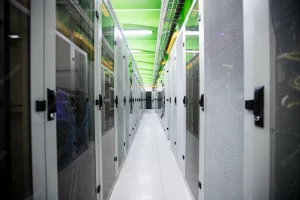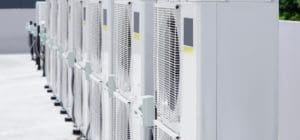Data centre HVAC solutions are essential for maximising performance and efficiency in your facilities. At EziBlank, we understand that optimising air flow management is key to reducing energy consumption and enhancing the longevity of your infrastructure. Our innovative blanking panels not only minimise cold air bypass but also support precise thermal monitoring, empowering you to achieve significant cost savings while maintaining optimal operating conditions. Discover how our intelligent designs can transform your data centre environment and protect your vital assets—choose EziBlank for unmatched reliability and performance.
How to Manage Airflow in a Data Center
Managing airflow in a data centre is crucial for maintaining optimal cooling efficiency and ensuring the longevity of equipment. Effective airflow management begins with the strategic placement of blanking panels in server racks to eliminate gaps, which prevents hot air from recirculating and ensures that cool air is directed precisely where it’s needed. Implementing hot and cold aisle containment systems further enhances airflow by separating the hot exhaust air from the cool intake air, reducing the workload on cooling systems. Proper cable management is also essential to avoid obstructions that can disrupt airflow patterns. Additionally, using perforated floor tiles in the raised floor environment helps channel cool air directly to the servers. Regular monitoring and adjustments based on real-time data are necessary to maintain efficient airflow and adapt to changes in the data centre’s layout or load. These strategies collectively help optimise cooling, reduce energy consumption, and improve the overall performance of the data centre.
Read More
The 411 on CRAC Units
Computer Room Air Conditioning (CRAC) units are essential components in data centre cooling systems, designed to maintain optimal temperature and humidity levels for sensitive IT equipment. These units work by drawing warm air from the data centre, cooling it, and then distributing the chilled air back into the room, ensuring that servers and other hardware operate within safe temperature ranges. CRAC units often feature precise controls to maintain consistent environmental conditions, which is crucial for preventing overheating and ensuring the longevity of equipment. Incorporating CRAC units into a data centre's cooling strategy, along with effective airflow management techniques like blanking panels and aisle containment, helps improve overall cooling efficiency and reduce energy consumption.
Read More
What is Hot Aisle Containment
Hot aisle containment is a cooling strategy used in data centres to improve energy efficiency by isolating the hot air generated by servers. In this setup, the hot aisle, where the backs of the servers expel warm air, is enclosed, preventing the hot air from mixing with the cool air in the rest of the data centre. This containment ensures that the hot air is directed straight to the cooling units, where it is removed or recycled, thereby reducing the workload on the cooling system. By maintaining a clear separation between hot and cold airflows, hot aisle containment helps to lower energy consumption, enhance cooling efficiency, and maintain optimal operating conditions for the servers, making it a crucial strategy for modern data centre management.
Read More
The Basics of Airflow Management
Airflow management is a fundamental aspect of data centre design that focuses on optimising the cooling process to ensure that IT equipment operates efficiently and reliably. The primary goal is to prevent the mixing of hot and cold air within the data centre, which can lead to hotspots and inefficient cooling. Key strategies include the use of blanking panels to seal off unused rack spaces, directing cool air to where it’s needed most and preventing hot air from recirculating. Additionally, hot and cold aisle containment systems are employed to physically separate the cold intake air from the hot exhaust air, further improving cooling efficiency. Effective airflow management reduces the energy required for cooling, lowers operational costs, and enhances the overall performance and lifespan of data centre equipment.
Read More
